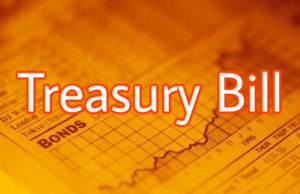Ghana Expected to Beat Debt Reduction Target Ahead of Schedule, Says Barclays

Ghana is on track to surpass its debt reduction targets three years ahead of schedule, with the nation’s debt-to-GDP ratio expected to decline to 54% by January 2025, according to a recent analysis by Barclays Plc. If these projections are confirmed, Ghana will have achieved the goal set in its agreement with the International Monetary Fund (IMF), which was originally aimed for completion by 2028. This remarkable progress marks a significant recovery for a country that faced severe fiscal challenges in recent years.
The IMF’s $3 billion bailout package, which Ghana entered into following a default on external debt in 2022, included a target for the country to reduce its debt-to-GDP ratio to 55% by 2028. Barclays economists Michael Kafe and Andreas Kolbe credit the unexpected progress to stronger-than-anticipated economic growth, along with disciplined fiscal policies that have helped to stabilize the country’s finances. “Ghana’s public debt has eased earlier than expected, largely due to a larger-than-anticipated economy and tight fiscal control,” the analysts explained in their report.
The Bank of Ghana is expected to release official figures on this reduction in the next two weeks, but early projections suggest the country has made significant strides in its recovery. Just two years ago, Ghana’s economic outlook was grim, having been forced to default on its external debt obligations, prompting the government to seek IMF assistance. In response, Ghana has undergone a stringent fiscal adjustment process, aimed at restoring macroeconomic stability and boosting investor confidence.
With President John Dramani Mahama returning to office after his victory in the December 2024 elections, the government remains committed to maintaining its fiscal discipline. Mahama has pledged that his administration’s economic recovery plan will continue to prioritize financial responsibility. One of the key aspects of this plan is reducing the fiscal deficit significantly, with the government targeting a reduction from 7.9% of GDP in 2024 to just 3.1% in 2025.
Despite a slight increase in total debt to GH₵755 billion (approximately $57.4 billion) in January, driven by new domestic borrowing and a 4% depreciation of the Ghanaian cedi against the US dollar, the country’s growing economy is helping to reduce the relative burden of the debt. The projected rise in nominal GDP to about GH₵1.4 trillion in 2025, compared to GH₵1.2 trillion the year before, is expected to further improve the debt-to-GDP ratio, easing the pressure on the national budget.
However, Barclays analysts have noted that public debt may rise temporarily if the government ramps up spending on large infrastructure and development projects. “Although Ghana is making significant progress, public debt could increase again as the administration steps up expenditure on key initiatives,” Kafe and Kolbe warned.
Under the terms of the IMF agreement, Ghana was required to lower its debt-to-GDP ratio to 55% by 2028. If the country meets this target earlier than expected, it could significantly boost investor confidence and send a strong signal about the nation’s economic stability following years of financial turbulence.
As Ghana continues to stabilize its economy, the government is expected to maintain its engagement with international partners and investors to safeguard fiscal gains, encourage growth, and ensure long-term sustainability.








